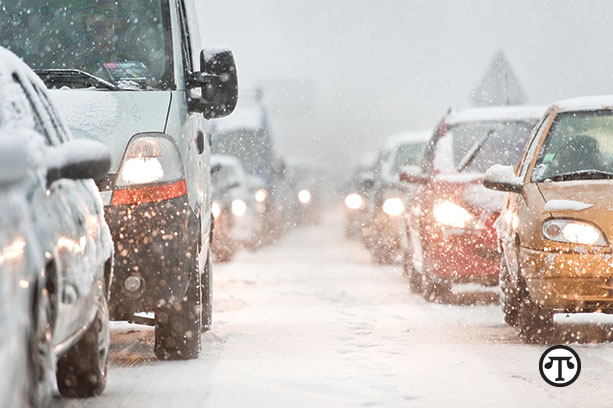
(NAPSI)—While it’s always a good time to make sure your vehicle is in good shape, it’s particularly important when bad weather and the busy travel season occur.
Vehicle maintenance and preparedness are key for keeping you protected but it can be challenging to know where to start. To help, here are the answers to the most common winter driving questions that people ask.
Q: What’s the most important thing to keep in mind when it comes to winter driving?
A: Make sure that you allow extra time and slow down. Whether you’re cornering, stopping, accelerating or driving on a straightaway, reducing speed is the key to safe winter driving. Tires have a big effect on what the car can do. Tires are your car’s only point of contact with the road, and they influence how much control you have while driving. Before you’re on the road, make sure you have properly inflated tires and adequate tread depth to help your tires do their job—grip the road and stop safely.
Q: How can drivers prepare for winter road trips?
A: Plan ahead and winterize your vehicle. Take your car in for routine maintenance, including checking your tires. Before you get on the road, check the department of transportation’s website for road conditions. Listen to the radio for announcements about accidents, road closures and travel advisories. Also, let someone know your route in case an accident occurs, and you get stuck in an area with no cell service.
Q: What type of tires should I get for my vehicle, snow tires or all-weather tires? What’s the difference?
A: The decision between studded and winter tires comes down to personal needs based on your commute and driving habits. Winter traction tires are specifically designed to provide the extra grip, braking and handling you’ll need to confidently drive on slush and packed snow. Studded tires offer additional traction in more treacherous winter driving conditions, such as ice. Chains can be important, too—and are sometimes required—for traction when you’re traveling in the mountains or on icy roads. It is always recommended that you talk to a tire expert to help you make the best decision based on your need.
Q: What should I have in my car in case of an accident?
A: A winter accident could leave you stuck on the side of the road in cold, wet weather. Packing your car with a few essentials will help keep you safe and ready for any unexpected detours. Store snacks, water bottles, an ice scraper, flares, chains, a flashlight, blankets and a roadside safety kit in your trunk. And always carry a cell phone. Many Les Schwab stores also offer emergency roadside assistance—if your vehicle breaks down, especially due to tire- or wheel-related issues, they’ll do everything they can to help get you back on the road.
The tire experts at Les Schwab Tire Centers can help ensure your vehicle is winter ready. Before you hit the road, they’ll check your tires’ air pressure and tread depth and do a visual alignment to ensure the tires are wearing evenly. They’ll also check your brakes, shocks and battery, all free as part of their pre-trip safety check. They have a full inventory of winter traction and studded tires, chains and other devices to meet your needs. To find a store nearby, visit www.lesschwab.com/about/store-locator. Safe travels.
